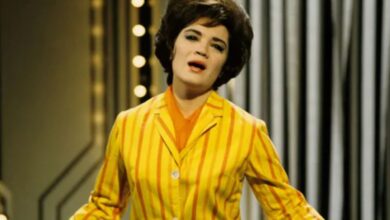Peter, Paul and Mary’s “Where Have All the Flowers Gone?” Amplifies Folk’s Protest Voice in 1962
In 1962, the American folk trio Peter, Paul and Mary released their rendition of “Where Have All the Flowers Gone?” on their self-titled debut album. This poignant anti-war ballad resonated deeply during a period marked by social and political upheaval, contributing to the song’s enduring legacy as a protest anthem.
Peter, Paul and Mary—comprising Peter Yarrow, Paul Stookey, and Mary Travers—emerged from New York City’s vibrant Greenwich Village folk scene. Known for their harmonious vocals and commitment to social justice, the trio quickly distinguished themselves in the early 1960s folk revival movement.
“Where Have All the Flowers Gone?” was originally penned by folk musician Pete Seeger in 1955, drawing inspiration from traditional Cossack folk songs and the novel And Quiet Flows the Don by Mikhail Sholokhov. The song’s cyclical structure and haunting refrain poignantly question the senselessness of war and humanity’s failure to learn from past mistakes.
The trio’s interpretation of the song featured their signature harmonious blend, with acoustic guitar accompaniment that underscored the song’s somber message. The simplicity of the arrangement allowed the profound lyrics to take center stage, enhancing the song’s emotional impact.
Upon its release, “Where Have All the Flowers Gone?” contributed to the album’s success, which spent five weeks as the No. 1 album in the United States. The song itself became a staple in the folk music repertoire, embraced by audiences who were increasingly attuned to the era’s social and political issues.
The song’s anti-war message struck a chord during the early 1960s, a time when the civil rights movement was gaining momentum and the Vietnam War loomed on the horizon. Its poignant lyrics and melancholic melody made it an anthem for peace activists and a rallying cry against the futility of conflict.
For Peter, Paul and Mary, “Where Have All the Flowers Gone?” reinforced their role as musical advocates for social change. The song became a highlight of their live performances, further solidifying their reputation as artists deeply engaged with the pressing issues of their time.
The influence of “Where Have All the Flowers Gone?” extended beyond the folk genre, inspiring numerous artists to cover the song. Notably, Marlene Dietrich recorded a German version titled “Sag mir, wo die Blumen sind,” which gained international acclaim and introduced the song to a broader audience.
The song has been covered by a diverse array of musicians, including Joan Baez, The Kingston Trio, and Johnny Rivers, each bringing their unique interpretation while preserving the song’s core message of lamentation and hope.
Around the time of the song’s release, the United States was grappling with the escalating tensions of the Cold War and the burgeoning civil rights movement. “Where Have All the Flowers Gone?” provided a reflective commentary that resonated with the collective consciousness of a society on the brink of significant change.
Decades later, the song’s legacy endures, with its continued presence in educational curricula and its performance at peace rallies and commemorative events. Its timeless message serves as a reminder of the cyclical nature of human conflict and the persistent hope for a more peaceful world.
“Where Have All the Flowers Gone?” exemplifies the power of music to influence societal perspectives, encouraging listeners to reflect on the consequences of war and the importance of learning from history. Its straightforward yet profound lyrics have inspired countless artists to craft songs that challenge the status quo and advocate for change.
In recognition of its cultural significance, the song has received numerous accolades and has been included in various anthologies of essential folk music. Its enduring relevance is a testament to its universal message and the emotive delivery by artists like Peter, Paul and Mary.
Reflecting on the impact of “Where Have All the Flowers Gone?”, it becomes clear why this track remains a poignant and powerful piece in the canon of protest music. Its haunting melody and introspective lyrics continue to resonate, reminding us of the enduring quest for peace and understanding in a tumultuous world.
Peter, Paul and Mary’s rendition of “Where Have All the Flowers Gone?” not only solidified their place in the folk music movement but also contributed to a broader cultural dialogue about war, peace, and the human condition. Their heartfelt performance of this timeless song continues to inspire and challenge others to reflect on the lessons of history and the possibilities of a more harmonious future.



